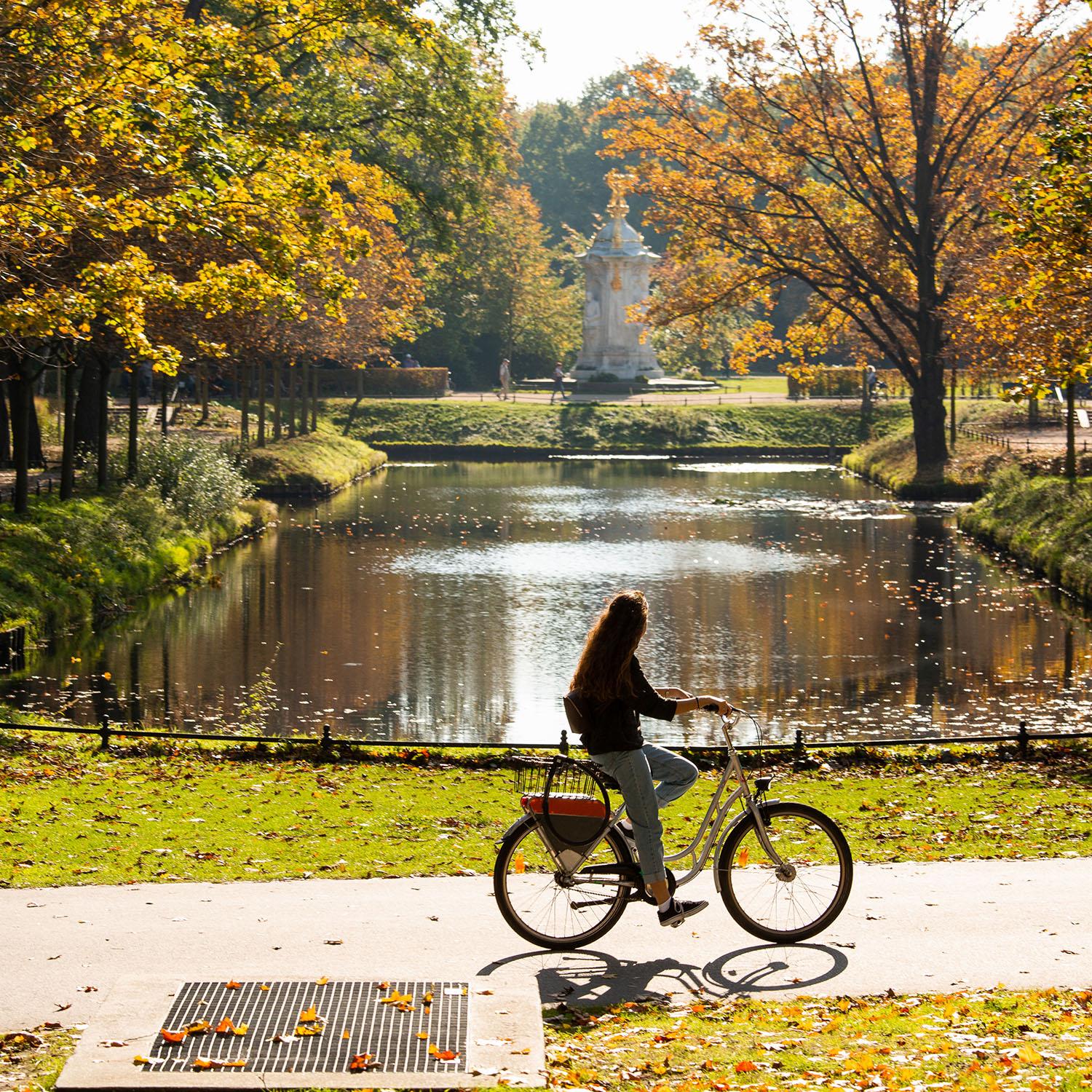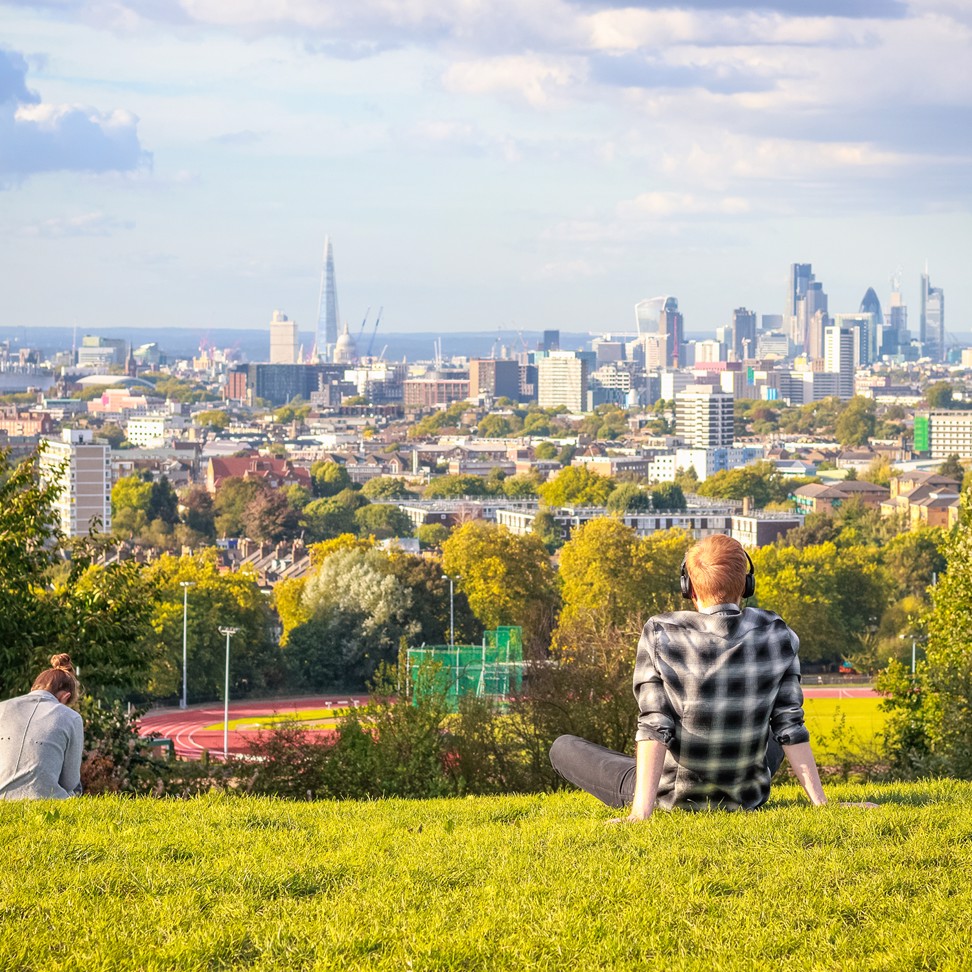Fresh off a successful stint as 2017’s European Capital of Culture, Denmark’s fastest-growing city has never been better prepared to welcome visitors. Though undeniably booming, Aarhus remains decidedly cosy, gracefully balancing its rich heritage with its spirited modern momentum.
You can easily fill three days exploring its numerous historical attractions and top-notch museums while sampling its exciting spread of cafes, restaurants and bars.
The charms of old Aarhus
Start off your first day in town with a stroll through its oldest and most charming neighbourhoods – the Latin Quarter. Dating from the 15th century, it’s a twisting warren of cobblestone streets lined with trendy boutiques, bars, restaurants and cosy cafes. Pick up a fresh pastry at Nummer 24, among the best bakeries in town, or find a seat at Cafe Jorden, which spills into the open square of Pustervig Torv when the weather allows.
Rising at the southern edge of the Latin Quarter – and visible from almost anywhere in town – is the 96-metre spire of Aarhus Cathedral, the tallest in all of Denmark. Its construction first began in the 12th century, though the old Romanesque basilica was greatly expanded in the 15th century, embellished in the Gothic style with a longer nave, a vaulted ceiling and higher windows to let in more light. The elaborate frescoes from the same era were covered over when the Reformation swept Denmark, though in recent years many have been restored – you’ll find more of them here than in any other church in the country.
Hidden underground just a few steps south of the church’s giant doors is another portal to the past, the Viking Museum. This collection features some fascinating finds dug up on the spot and dating back to as many as 1200 years ago, when Vikings first settled Aarhus – or Aros, as it was then known.
A five-minute walk east of the cathedral along Vestergade, another of Aarhus’ favourite shopping streets, stands Aarhus’ oldest church, the Church of Our Lady. Here lie over a thousand years of history, including a crypt church set beneath the main structure. Head one block south of Vestergade to find Aarhus’ most picturesque cobblestone street, Møllestien, fringed with flowers that press the rows of small, half-timbered houses, most painted in pretty pastels.
A 10-minutes’ walk east and you’ll reach Den Gamle By, a fascinating complex of reconstructed historical neighbourhoods. It’s without a doubt the most immersive way to experience Denmark’s olden days, with shops offering historical wares and costumed staff that bring the setting to life – as maids, priests or shopkeepers. Visit all three parts of the park to witness the evolution of technology, cuisine, fashion, style and culture over the years.
Explore the rustic homes, apartments and workshops of Hans Christian Andersen’s Denmark, glimpse the burgeoning modernity of the early twentieth century, and, finally, take in 1970s Denmark – the era of cultural liberation – through wandering the apartments of leftist students, retired couples and communal housing popularised during this era.
Head back to Vestergade for dinner, where there are plenty of excellent choices. For a very affordable meal in a warm, cosy environment, head to Vesterlauget, a bodega with a rotating menu of mostly French bistro-style cuisine. For something a bit more upscale, head to Møf, just around the corner, for some delicious beef tartar. Finish off the day with a glass at S’vinbar, Aarhus’ top wine bar, set only a couple of minutes away on Klostergade.
Modern art, architecture and culture
One of Scandinavia’s most exciting libraries: Dokk1 © kioofficial
For your second day in town, take a walk along the cutting edge of modern Aarhus’ vibrant cityscape. Start off along the sea on the far eastern side of Aarhus’ pretty yacht harbour, where the city’s newest neighbourhood – Aarhus Docklands (or Aarhus Ø) – is spread across a kilometre-long stretch of reclaimed land. Its top architectural, Isbjerget (The Iceberg), is a mesmerising huddle of bright, angular towers, it was built to resemble the floating bergs of the North Atlantic. North of here spreads Ø-haven, an urban garden space devoted to micro-farms.
In good weather it’s a pleasant fifteen-minute stroll south along the harbour to Aarhus’ grand new library, Dokk1 (also known as ‘Dokken’), towering over the juncture of city and harbour at the mouth of the Aarhus River, the small river that bisects the town. It’s the largest public library in all of Scandinavia, and certainly among the most visually striking anywhere, having earned a shower of prestigious accolades since its completion in 2015.
For lunch, head another five minutes south of Dokk1 to reach another of the city’s welcome new additions, Aarhus Street Food. Housed in an old bus garage just opposite the Bus Station (and just a couple minutes’ walk east of the train station), it boasts around 30 food stalls, with everything from to pulled duck burgers to banh mi. Alternatively, enjoy some fancy dining with a view at Salling Rooftop. It’s got some of the best vistas in town, as well a glass viewing deck that extends high over the city’s busiest pedestrian thoroughfare, Søndergade.
Further to the west you’ll reach the City Park and pass beneath the iconic tower of City Hall. From there you’re only a few steps away from Aarhus’ world-class art museum, ARoS. Despite its Viking-era name, this museum is markedly modern, the bulk of its exhibits devoted to contemporary art – from paintings and sculptures to large-scale installations.
Be sure to alot a few hours, and don’t miss the museum’s crowning work, built over the top floor: Olafur Eliasson’s rainbow panorama, a technicolour circular walkway affording tinted views over the city.
Bold colours and a bird’s eye view of the city at ARoS ©Tom Roche/Shutterstock
A stone’s throw away from the museum you’ll find the lively cultural centre of Godsbanen, occupying a pair of old warehouses at the end of a disused railway yard. It hosts dozens of cultural exchanges, events and workshops, and there’s an excellent restaurant beneath its sloping concrete roof. Climb to the top, enjoy a coffee amid the lush greenery of nearby Plantecaféen, or walk a bit further along to explore Godsbanen’s Institut for X, a hodgepodge of yurts, shipping container homes and art installations.
Outdoors and out of town
On your last day in town you can check out some of Aarhus’ outdoor attractions, most of them set to the south. To reach them all comfortably in a day it’s best to hire a car.
Begin by heading north around the bay to the 14th-century ruins of Kalø Castle. Its crumbling hulk sits at the end of a long causeway and makes a worthwhile outing in good weather, not least for the views across the bay.
On your way back through the city, make a stop at the Botanical Gardens, sprawled across a hillside near the centre. The highlight here – particularly when the weather outside is less than temperate – is a stroll through the greenhouses’ four different climate zones. The largest of these is a giant, domed hothouse where you can climb to a viewing platform over the canopy of a sweltering slice of tropical rainforest.
Just beyond town to the south is the beautiful 18th-century Marselisborg Castle, the summer residence of Denmark’s Queen. When Her Majesty is around, you can catch the changing of the guards each day at noon. Not far from here, a circular wooden walkway – Den Uendelige Bro (The Infinite Bridge) extends off the coast and into the bay between May and October, while nearby is the Marselisborg Dyrehave, a popular park where surprisingly friendly deer and boar roam.
In the middle of the greenery … Moesgaard Museum © elena.novotni
Continue south for another 5km to reach the day’s highlight, Moesgaard Museum. Surrounded by forest, the modernist structure rises diagonally from the hillside, and a walk to the top affords pretty views over the countryside. Inside, the top-notch exhibits offer an up-close glimpse into prehistory, from its evolutionary stairway to the world’s best-preserved Iron Age bog body – Grauballe Man.
For dinner, either continue another 10km south for some fine dining at Norsminde Kro, famed for its inventive takes on traditional Danish fare, or head back to the city centre to Jægergaardsgade, yet another enticing street packed with cafes and restaurants, among them Prezzemolo, a stylish new osteria. Virtually next door is Mikkeller Bar, with twenty rotating taps of craft beer and expert staff.
Where to stay in Aarhus
Budget
Set right in the centre of the old town, CABINN Hotel Aarhus offers spotless, functional rooms at reasonable rates. Even cheaper are the dorms at lively and welcoming Danhostel Aarhus, just across the river, with nice city views from its shared roof terraces.
Mid-Range
One of the city centre’s newest options is Hotel Carmel, a refurbished old mission house featuring refitted vintage furniture and a classy jazz and swing bar in the downstairs salon. Just a couple minutes’ walk east of the train station is Comwell Aarhus, a high-rise modern four-star with a host of amenities and fantastic city views.
High-end
You can take a breather from all the walking in Villa Provence’s cosy courtyard © villaprovence
Two of the best luxury options in Aarhus are right in the centre of town – Villa Provence, an elegant boutique hotel set around a peaceful courtyard, and Hotel Royal, set in a lavishly decorated neoclassical building with unrivalled views over the cathedral.




